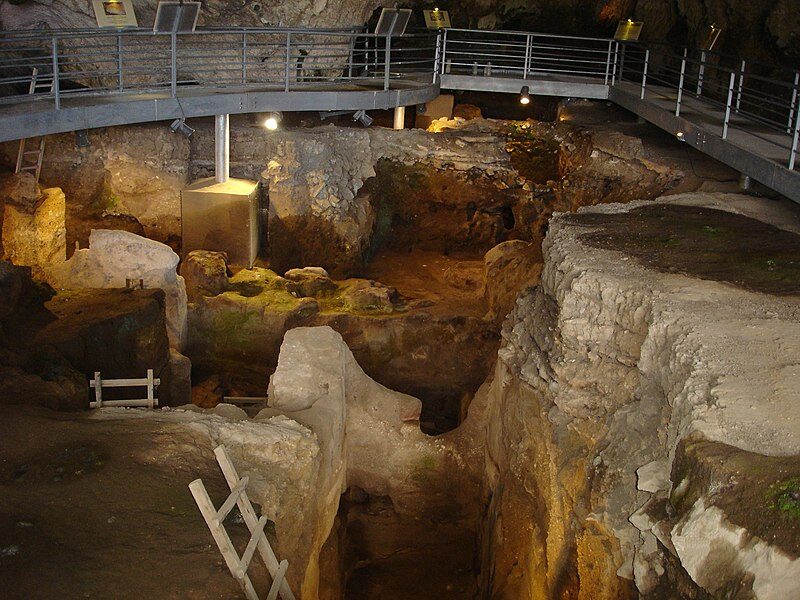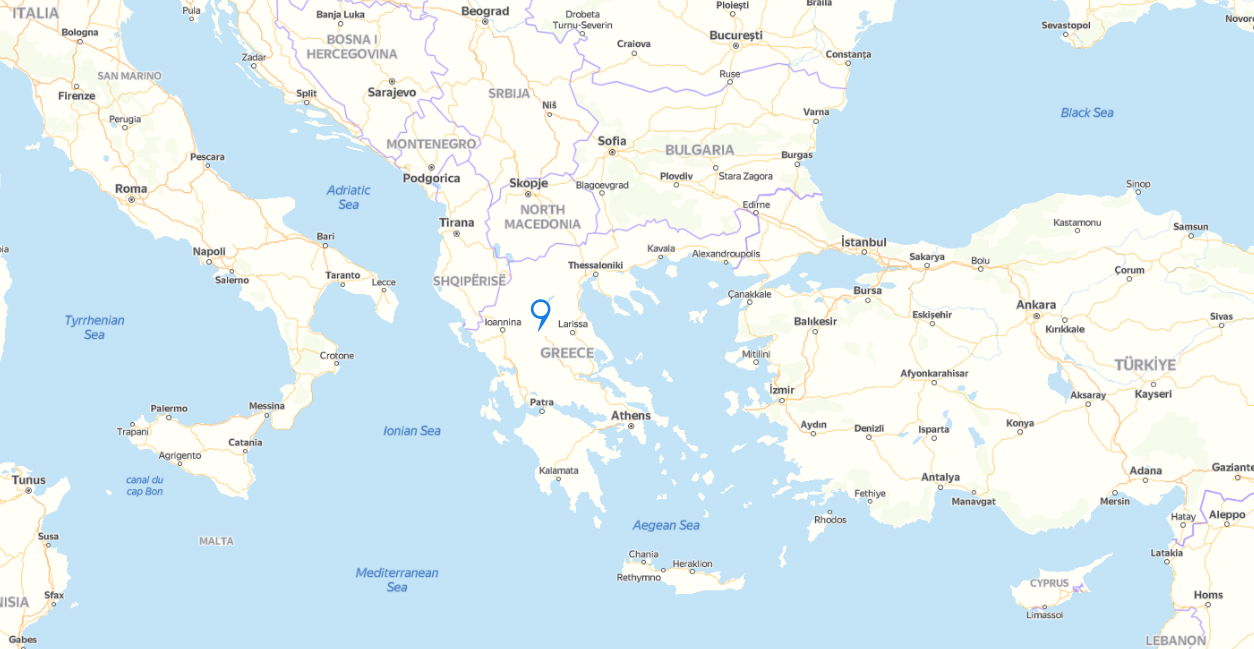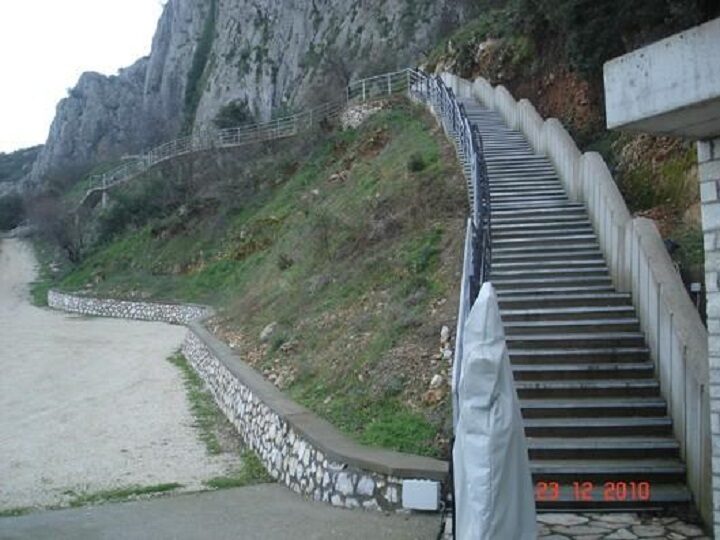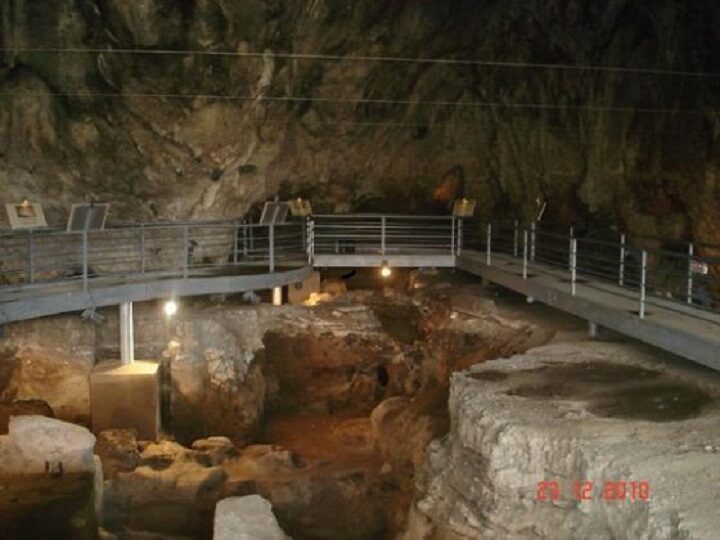
© Tolis-3kala/Wikimedia CommonsTheopetra Cave
The
Theopetra Cave in Thessaly, Central Greece, was formed in the Upper Cretaceous period, 137,000,000 - 65,000,000 years before the present time. The cave that was created in the limestone there has been inhabited since the Middle
Paleolithic period, and new findings give new insight into the lives of those early peoples.
According to archaeologists, the cave
is likely to be the place of the oldest human construction on earth, as findings indicate that the shelter was inhabited as early as 130,000 years ago.
Excavations at Theopetra began in 1987 under the direction of the archaeologist Dr. Catherine Kyparissi-Apostolika, honorary head of the Ephorate of Palaeoanthroplogy and Speleography of Greece's Ministry of Culture and Sports.
The findings made there since that time include
stone tools of the Paleolithic, Mesolithic and Neolithic periods, as well as Neolithic pottery, bone and shell objects. The findings are important evidence for the transition from the Paleolithic to the Neolithic era way of life in Greece.

© YandexLocation of Theopetra Cave on a map
The newest findings show that
an estimated 43 people lived in Theopetra Cave during the Neolithic era. Experts have even been able to confirm that they ate wheat, barley, olives, legumes and some meat in their diets.Τhe latest data presented by Dr. Kyparissi-Apostolika show that
the cave has served as a refuge for people for many thousands of years, and it is very likely that there were periods when they left it, depending on the prevailing weather conditions, as the climate changed repeatedly during those many thousands of years.
In recent years the cave also served as a shelter for the local population in times of war, and also at other times for animal pens.

© Ministry of Culture and SportsThe steps leading to the cave entrance.
According to Dr. Kyparissi-Apostolika,
human burials are also found at the site, so there is no doubt that there were inhabitants at this cave.
Two burials correspond to the post-glacial Upper Paleolithic period, with one dating back to 14,990-14,060 BC; while three other burials correspond to the Mesolithic period, and have been dated between 7,000 and 7,500 BC.All the skeletons likely belong to the Homo Sapiens species.In the deeper layers of the Middle Paleolithic period no burials were found, but human footprints were discovered, in what was a very rare find anywhere in the world. The feet were covered with some type of foot covering, so it is difficult to detect particular anatomical features.
However,
according to the types of stone tools found in these layers, Neanderthal people lived there.

© Ministry of Culture and Sports
According to the paleopathological analysis of the
human bones of the Neolithic period found, the estimated 43 people who lived at that time in the cave seem to have been quite healthy, the archaeologist reported.
The abandonment of the cave by its occupants around 4,000 BC is most likely associated with natural phenomena as well as with the exploitation of the land for cultivation. The force of the water that entered the cave through the karst pipes towards the end of the Neolithic era and the detachment and collapse of large pieces from the roof, again due to erosion, probably pushed the occupants out of the cave in search of another place of residence and a way of life that they already knew from the outdoors settlements in their wider area, Dr. Nina Kyparissi-Apostolika noted.
Due to its importance for the prehistory of Southeastern Europe, the cave became an archaeological site open to visitors, while its findings are exhibited at the Theopetra Cave Documentation and Training Center (Museum) at the entrance of the village, not far from the cave.
The site officially opened to the public in 2009, but closed temporarily a year later, as the remains of a human-constructed stone wall were discovered during that year. It reopened a year later, but closed once again in 2016, and unfortunately remains closed due to the risk of landslides.
Did you know that even Florida has state caverns? (Up on the Alabama line.) Florida Caverns State Park [Link]
R.C.